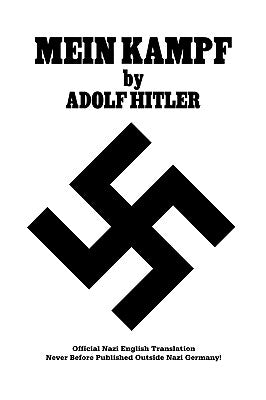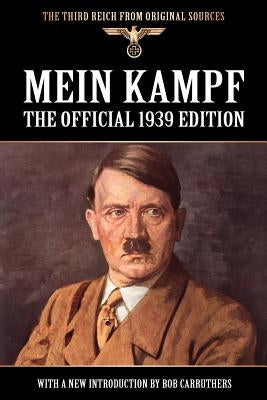Best Fiction for Understanding Middle Eastern Cultures

Fiction offers a unique window into the hearts and minds of different cultures. When it comes to the Middle East, a region rich with history, tradition, and diversity, fiction can help readers understand the complexities of its people, politics, and societies. From stories of love and family to those of war and survival, these novels not only entertain but also provide deep insights into the cultural fabric of the Middle East.
In this guide, we’ll explore some of the best fiction for understanding Middle Eastern cultures. These books capture the essence of Middle Eastern life, offering perspectives on everything from family dynamics and gender roles to religion and historical events. Whether you're interested in contemporary works or classic literature, these novels will provide a deeper understanding of the region’s diverse and complex cultures.
1. The Kite Runner by Khaled Hosseini
The Kite Runner is a powerful novel set in Afghanistan, capturing the complexities of friendship, guilt, and redemption. The story revolves around Amir, a young boy from a wealthy family, and Hassan, the son of his father’s servant. Through their relationship, Hosseini explores themes of social hierarchy, ethnic tensions, and personal integrity in Afghan society. The novel also delves into the impact of the Soviet invasion of Afghanistan and the rise of the Taliban, offering a glimpse into the political and cultural upheavals of the time.
Why It’s a Must-Read:
Hosseini’s vivid storytelling provides a personal lens into Afghan culture, from the intimate bonds of friendship to the broader societal pressures of class and ethnicity. The Kite Runner is both a heartbreaking and enlightening journey into the complexities of Afghan society.
2. Persepolis by Marjane Satrapi
Persepolis is a graphic novel that chronicles Marjane Satrapi’s childhood and early adult years during and after the Islamic Revolution in Iran. Told through simple yet striking illustrations, Satrapi's memoir offers a unique perspective on life in Iran, particularly the challenges faced by women and the impact of political repression. The novel weaves personal experiences with historical events, shedding light on how ordinary Iranians navigated the complexities of revolution and war.
Why It’s a Must-Read:
Persepolis provides a rare and intimate view of Iranian culture from the perspective of a young woman. Satrapi’s personal experiences make this graphic novel an accessible and emotionally resonant introduction to Iranian society and its political struggles.
3. A Thousand Splendid Suns by Khaled Hosseini
Another masterpiece by Khaled Hosseini, A Thousand Splendid Suns focuses on the lives of two Afghan women, Mariam and Laila, as they navigate the challenges of marriage, motherhood, and survival under oppressive regimes. Set against the backdrop of Afghanistan’s tumultuous history, including the Soviet invasion, the rise of the Taliban, and post-Taliban rebuilding efforts, the novel explores themes of gender inequality, family bonds, and the strength of women in the face of adversity.
Why It’s a Must-Read:
Hosseini’s portrayal of the struggles and resilience of Afghan women provides profound insights into the cultural and societal expectations placed on women in the Middle East. The novel is a tribute to the enduring spirit of Afghan women amid decades of conflict.
4. Season of Migration to the North by Tayeb Salih
Set in post-colonial Sudan, Season of Migration to the North is a classic work of Arabic literature that tackles themes of identity, colonialism, and the clash between East and West. The novel follows a young Sudanese man who returns to his village after studying in England, only to encounter a mysterious stranger whose experiences in the West mirror his own. Through the interactions between these two characters, Salih explores the complex dynamics of cultural exchange, power, and resistance.
Why It’s a Must-Read:
This novel is a profound exploration of the impact of colonialism on Middle Eastern and African identities. Salih’s lyrical prose and deep insights into cultural dislocation make Season of Migration to the North a thought-provoking read for those interested in the intersection of the Middle East and the West.
5. Palace Walk by Naguib Mahfouz
Palace Walk is the first book in Naguib Mahfouz’s Cairo Trilogy, a sweeping family saga set in early 20th-century Egypt. The novel centers on the patriarchal al-Jawad family, particularly the domineering father, who enforces strict discipline within his household while secretly indulging in more liberal behavior outside. Mahfouz’s work captures the tensions between tradition and modernity in Egypt, as well as the impact of political events such as British colonialism and Egyptian nationalism on everyday life.
Why It’s a Must-Read:
Mahfouz’s rich depiction of Egyptian family life and societal norms makes Palace Walk an essential read for anyone interested in the cultural transitions that shaped modern Egypt. The novel provides a vivid portrait of Cairo’s streets, customs, and changing values.
6. The Yacoubian Building by Alaa Al Aswany
Set in a once-grand apartment building in Cairo, The Yacoubian Building offers a snapshot of contemporary Egyptian society. Through the lives of its diverse residents, Al Aswany explores issues such as corruption, poverty, political repression, and the aspirations of Egypt’s middle class. The novel captures the contradictions and challenges of life in modern Egypt, revealing the struggles faced by people from different walks of life as they navigate a rapidly changing world.
Why It’s a Must-Read:
Al Aswany’s novel is a powerful social commentary on the realities of modern-day Egypt, providing an unflinching look at the disparities between rich and poor, the erosion of moral values, and the quest for power. The Yacoubian Building is a gripping read that paints a complex picture of life in Cairo.
7. Girls of Riyadh by Rajaa Alsanea
Girls of Riyadh is a groundbreaking novel that offers a rare glimpse into the lives of young Saudi women. Written in the form of emails, the book reveals the personal stories of four women from the upper echelons of Riyadh society as they navigate love, relationships, and societal expectations. Alsanea’s candid portrayal of the challenges faced by women in a conservative society sparked controversy when the book was first published but also highlighted the changing role of women in Saudi Arabia.
Why It’s a Must-Read:
Girls of Riyadh provides a fresh and modern take on Middle Eastern culture, particularly the ways in which young women are challenging traditional gender roles in Saudi society. The novel is an eye-opening and thought-provoking exploration of love, freedom, and identity in the Middle East.
8. The Map of Love by Ahdaf Soueif
The Map of Love is a sweeping historical romance that intertwines two love stories: one set in the late 19th century and the other in the present day. Through these parallel narratives, Soueif explores the political and cultural tensions between Egypt and the West, as well as the personal lives of the characters who navigate these worlds. The novel is rich in historical detail, providing a deep understanding of Egypt’s colonial past and its impact on contemporary society.
Why It’s a Must-Read:
Soueif’s novel is a captivating blend of romance, history, and political commentary. It provides a nuanced portrayal of Egypt’s relationship with the West and the ways in which history continues to shape modern identities. The Map of Love is a beautifully written and emotionally resonant novel that offers a deep dive into both Egypt’s past and present.
Best Fiction for Understanding Middle Eastern Cultures
The Middle East is a region of great complexity, diversity, and rich cultural heritage. Through fiction, readers can gain a deeper understanding of the region's traditions, challenges, and societal changes. From the emotional depth of The Kite Runner and A Thousand Splendid Suns to the historical richness of The Map of Love, these novels offer a window into the lives, struggles, and triumphs of people in the Middle East.
Each of these books provides a unique perspective on Middle Eastern cultures, highlighting everything from the impact of war and revolution to the intricate dynamics of family and gender. Whether you’re looking to explore the history of Egypt, the societal changes in Saudi Arabia, or the complexities of Afghan society, these novels offer invaluable insights that will leave you with a deeper appreciation for the richness of Middle Eastern cultures.
Explore your favorite book at your own online bookstore.
Happy Reading!











